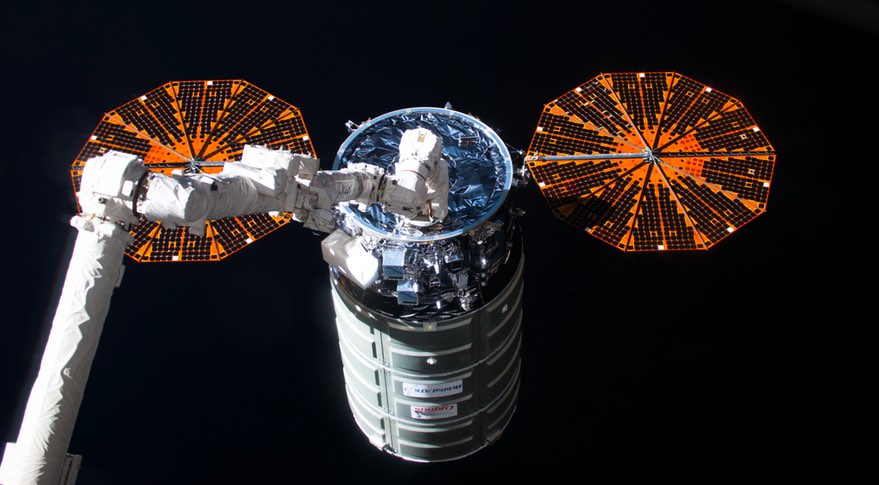Spire Deploys Four Small Satellites from Cygnus Cargo Ship

WASHINGTON — An Orbital ATK Cygnus cargo spacecraft deployed four small satellites for Spire Global on Friday (Nov. 25), the first time a cargo vessel deployed satellites above the orbit of the International Space Station (ISS).
The four Lemur-2 satellites were released from the Cygnus vehicle after it raised its orbit to an altitude of 500 kilometers. The Cygnus, which departed the ISS on Nov. 21, raised its orbit for the satellite deployment prior to its planned re-entry Nov. 27.
While Cygnus vehicles have deployed cubesats after departing the station, this was the first time that the Cygnus raised its orbit above the ISS prior to the deployment. The higher orbit gives the satellites a longer orbital lifetime: about two years from that higher orbit, versus nine months had they been deployed at the same altitude of the station. [Photos: Cygnus Spacecraft Launches with Cargo & Small Satellites ]
"The ISS deployments have been great to keep innovating our technology," said Jenny Barna, launch manager at Spire, in a Nov. 25 interview. "But this is a real, operational orbit, which is great for us."
Spire has launched 21 cubesat-class spacecraft to date, of which 16 are currently in orbit, including the four deployed Nov. 25. Most of those have been placed into orbit directly from the ISS or from other Cygnus spacecraft at the same altitude as the ISS. Four were launched into a polar orbit on an Indian Polar Satellite Launch Vehicle in 2015.
Spire is developing a constellation of cubesats to collect weather and ship tracking data. That effort has been slowed by difficulties the company has run into getting those satellites launched as secondary payloads thanks to a series of launch delays.
"We're struggling to build a constellation quickly," Barna said, noting that at one point last year the company expected to be launching satellites on a monthly basis in 2016, but have had only two launches so far this year. "The problem is absolutely not launch availability. The problem is will the launches happen when you expect them to. That can be a real killer for companies working with venture capital and trying to get to a point where revenue is coming into the door."
Get the Space.com Newsletter
Breaking space news, the latest updates on rocket launches, skywatching events and more!
Barna said that the company has booked slots for more than 70 satellites for launch next year on eight different vehicles. She did not identify the vehicles Spire is planning on using, but added the company is looking forward to flying additional satellites on the next Cygnus mission, OA-7, scheduled for launch in March 2017.
At least one launch in the first quarter of 2017 will place satellites into polar orbit, which Barna said would allow the company to provide global coverage. "Right now we're pretty happy with our constellation's performance," she said, citing recent software improvements that have increased the amount of data the satellites can provide by a factor of ten.
Barna said the company is keeping an eye on emerging dedicated smallsat launch vehicles, like Rocket Lab's Electron and Virgin Galactic's LauncherOne, but isn't expecting to use them to deploy its initial constellation. "We're cheering for all of them, and we think there's a few contenders," she said, citing a contract Spire announced with Rocket Lab in February. "But we're definitely not relying on the success of any of these companies to build our constellation and grow it."
This story was provided by SpaceNews, dedicated to covering all aspects of the space industry.
Join our Space Forums to keep talking space on the latest missions, night sky and more! And if you have a news tip, correction or comment, let us know at: community@space.com.

Jeff Foust is a Senior Staff Writer at SpaceNews, a space industry news magazine and website, where he writes about space policy, commercial spaceflight and other aerospace industry topics. Jeff has a Ph.D. in planetary sciences from the Massachusetts Institute of Technology and earned a bachelor's degree in geophysics and planetary science from the California Institute of Technology. You can see Jeff's latest projects by following him on Twitter.










